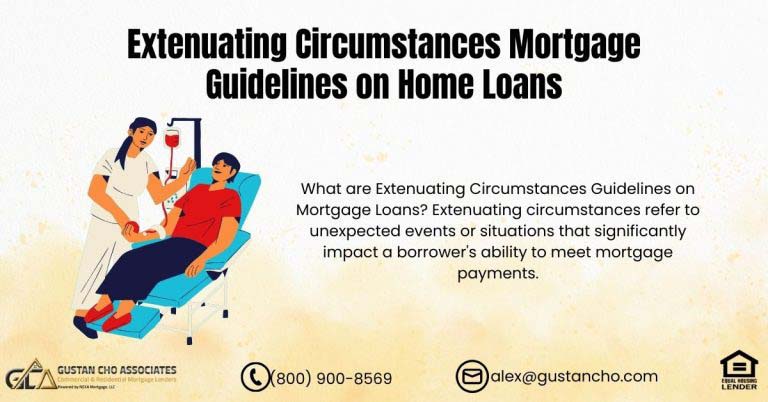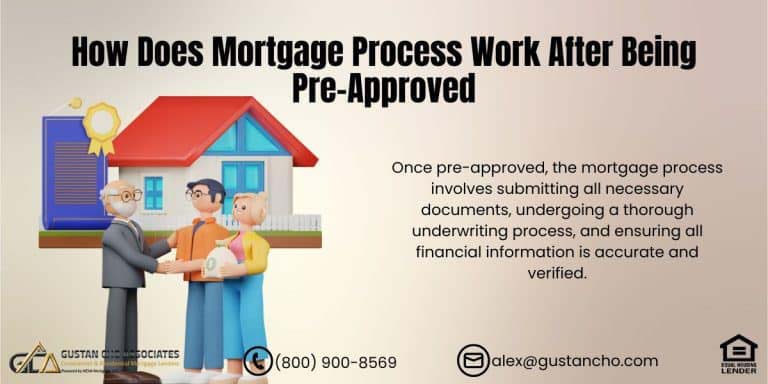This guide covers the top 5 mortgage types. How do you choose the best mortgage for your needs? By examining the pros and cons of major mortgage types and picking the right one for you. Government-backed loans like FHA, VA, and USDA were created to help Americans get into their first homes. Conventional (non-government) loans include the most popular conforming programs as well as non-QM specialty products. Conforming mortgages (Fannie Mae and Freddie Mac) are the most popular mortgages in the US. Once you understand the differences between these options, you can confidently choose the right home loan.
Need help choosing a mortgage? Get help from an expert now.
The Top 5 Mortgage Types
Mortgages are either government-backed or conventional. The term “conventional” refers to any mortgage that’s not backed by the government. Government loans in general have more flexible underwriting guidelines. They include FHA loans, which are available to anyone who qualifies. VA mortgages, a benefit just for active servicemembers and eligible veterans. USDA home loans, which have income eligibility guidelines and can only be used to buy or refinance a rural property. Conventional loans include every type of mortgage that is not a government-backed loan. Conforming mortgages, which called “conforming” because they must comply with guidelines established by Fanie Mae or Freddie Mac. Non-QM loans, which are designed to help borrowers with specific challenges. All other loans not backed by the government. It’s a broad category.
The Top 5 Mortgage Types: How Do You Choose a Mortgage?
When deciding which of these mortgage types is right for you, you need to first look at what a mortgage underwriter will see when you apply for a home loan.
- What is your credit score?
- How much savings do you have?
- What is your gross (before tax) income?
- How much do you owe creditors and what are the monthly payments?
Once you know what you’re working with, you can decide which of the major mortgage types is right for you.
The Top 5 Mortgage Types: Conforming loans (Fannie Mae and Freddie Mac)
Conforming loans are the most popular in the US. If you have good or excellent credit (a FICO of at least 680 for good and 740 for excellent), conforming loans are almost always the right loans for you.
Pros of Conventional Loans
The minimum down payment is as low as 3%. Mortgage insurance (PMI), for those who put less than 20% down, is cheap for people with good credit. You can request the cancellation of PMI once you pay your loan down to 80% of the purchase price. Or it expires automatically once your loan balance hits 78%. Products like HomeReady and Home Possible help first-timers with flexible underwriting and discounted mortgage insurance. You can use conforming loans to buy a primary residence, a vacation home, or a rental property. You can buy a single-family home, a manufactured home, a condo, co-op, or a multi-unit building. You’re allowed to get closing cost help from your seller, up to 3% of the purchase price. Most lenders underwrite conforming loans with automated underwriting systems (AUS) and can give you a decision in minutes. So there is no downside to applying for a conforming loan. If you get it, yay. And if you don’t, you have other options.
Cons of Conforming Loans
Their underwriting, especially income verification and debt-to-income ratios, can be strict. And if your credit score is low, the PMI can get really expensive. If your loan amount is too high to meet conforming guidelines, you’ll have to choose a non-conforming conventional loan, like a jumbo mortgage for high loan amounts. If you are eligible for VA financing and have less than 20% down, a VA loan could be cheaper. Your loan officer should be able to help you choose.
The Top 5 Mortgage Types: FHA Home Loans
FHA home loans are very popular with borrowers who have small down payments and some qualifying challenges. However, this type of mortgage has some significant downsides.
Pros of FHA Loans
Official minimum credit scores are very low — 580 for loans with at least 3.5% down and 500 for loans with at least 10% down. Understand, however, that most people with scores that low need significant compensating factors to achieve loan approval. Mortgage insurance premiums are the same for everyone. Those with lower credit scores don’t pay higher premiums.
You can finance a multi-unit property as a primary residence as long as you live in one unit and rent out the others. You can buy a fixer-upper and finance the repurchase price plus renovations with a single loan (the 203-k program).
FHA allows some of the highest debt-to-income ratios around — just under 57%. You can get closing cost help from your seller, up to 6% of the purchase price. You can buy a home while in a Chapter 13 repayment plan. If you can’t get approval from conforming underwriting, try FHA. FHA lenders also underwrite mainly with AUS and you’ll probably have a decision quickly.
Cons of FHA Home Loans
FHA mortgage insurance is expensive. You pay a 1.75% upfront premium. You can wrap that into your loan, so you don’t have to pay it out of pocket. In addition to the 1.75% upfront premium, you’ll also pay monthly mortgage insurance. And that insurance never goes away even if you pay your balance down to 10%. Most people refinance to another loan once their balance hits 80% of the property value. You can’t use an FHA loan to buy a vacation home or a rental. You can’t finance with FHA if your name turns up on CAIVRS, a database that tracks people who owe child support or money to the government. If you live in a community property state, you can’t buy a home in your own name without the lender counting your spouse’s debts in your DTI. For more information get touch with us, click here.
The Top 5 Mortgage Types: VA Mortgages
The VA mortgage program is one of the best mortgage types around. If you’re eligible for a VA home loan, and you have less than 20% down, that should be your go-to loan.
Pros of VA Loans
Lenders underwrite VA loans with AUS, so you get a decision in minutes. VA loans require no down payment. You can finance 100% of the property purchase price. Underwriting for VA mortgages is very flexible. If your DTI is too high, VA underwriters can use residual income to approve you. For most applicants, that’s a much more generous standard. There is no mortgage insurance with a VA home loan.
There is an upfront funding fee, which you can wrap into your loan balance if you don’t wish to pay it out of pocket. Disabled veterans can get a waiver for the funding fee.
Mortgage rates for VA loans are often lower than those of conforming or other loan programs. There is no official minimum credit score for VA home loans. Some lenders do set minimum scores in the low-to-mid 600s, but Gustan Cho Associates does not. There are no official loan limits for VA home loans. There is a limit to the amount the VA will guarantee. If you borrow more than the guarantee limit, you just need to make a down payment. You can use a VA loan to purchase a multi-unit property if you live in one of the units. You can buy a home while in a Chapter 13 repayment plan. VA loans are assumable even by non-veterans, which can help you sell your home faster or for more money.
Cons of VA Loans
You cannot use a VA home loan to buy a vacation or rental property. Only a primary residence. If you have a 20% or close to 20% down payment, and excellent credit, it can be cheaper to go with a conforming loan. You can’t finance with VA loans if your name turns up on CAIVRS, a database that tracks people who owe child support or money to the government. If you live in a community property state, you can’t buy a home in your own name without the lender counting your spouse’s debts in your DTI.
The Top 5 Mortgage Types: USDA Home Loans
USDA home loans are significantly different from FHA and VA home loans. Those programs are guaranteed by the government, but the government does not actually loan money. But the USDA program has two parts — a Direct program, which loans money at subsidized interest rates to people with very low income (and often runs out of money), and a Guarantee program, which works like the FHA program. For this article, we’ll cover the Guarantee program.
Pros of USDA Loans
There is no down payment requirement. You can finance up to 100% of your purchase. To keep payments as low as possible, 33-year terms are available. Mortgage insurance is cheaper than FHA. You can buy a home while in a Chapter 13 repayment plan. Sadly, there are a lot of hoops to jump through and a fair number of cons for this program.
Mortgage insurance requirements include a 1% upfront charge (you can wrap that into your mortgage) and monthly premiums, which do not expire as long as you have the loan.
Income cannot exceed limits for your area and family size. Property can’t be in a highly-populated area. About half of homes in the US qualify for USDA financing, however. You cannot use a USDA home loan to buy a vacation or rental property. Only a primary residence. If you have a 20% or close to 20% down payment, and excellent credit, it can be cheaper to go with a conforming loan. You can’t finance with USDA loans if your name turns up on CAIVRS, a database that tracks people who owe child support or money to the government. If you live in a community property state, you can’t buy a home in your own name without the lender counting your spouse’s debts in your DTI.
Get in touch for USDA home loan to buy property, click here
Non-QM Home Loans
Non-QM home loans are conventional loans, not backed by the government or Fannie Mae/Freddie Mac. These mortgage types can go by many names — nonconforming, non-prime, Alt-A (for old-school types), portfolio loans, and more. In most cases, they are geared toward the needs of real estate investors, self-employed borrowers, or people with credit challenges.
Bank Statement Loans
Bank statement loans are popular with self-employed applicants. Those who use extensive deductions and write-offs to reduce their taxable income can find that they don’t show enough income to qualify for a home loan. Even if they have the cash flow to easily afford a mortgage. Bank statement loan guidelines allow underwriters to determine the borrower’s income by averaging deposits to a business or persona bank account. They average (usually) 24 months of deposits and take a percentage of that (often 70%) as the qualifying income.
1099 Loans
Similar to bank statement loans, 1099 loans offer an alternative way to calculate self-employment income. Lenders consider 90% of the income on the applicant’s 1099 Miscellaneous forms to determine income. They don’t look at tax returns or deductions.
Non-Prime Loans
If you have a low credit score but decent income and a substantial down payment, you can get a mortgage. With a non-prime loan, you may qualify for a mortgage one day out of bankruptcy or foreclosure. Expect to pay higher interest rates.
Investor Stated Income Loans
It’s not legal to originate a stated income loan for a primary residence. But lenders can disregard your income if you buy a rental property with a good-sized down payment, and the rental income is enough to cover the mortgage payment, taxes, and homeowners insurance.
Other Investor Programs
Many mainstream mortgage programs limit the number of financed properties a borrower can have. These programs allow professional real estate investors and property flippers to maximize their cash flow when they buy and sell property.
Ask an Expert
You can see that the decision to take on a mortgage is not automatic or easy. If you want help with the analysis, contact an experienced and compassionate lender. You can email us at gcho@gustancho.com or call or text us at 800-900-8569. Or simply click here to prequalify for a home purchase and receive a custom mortgage rate quote right now.








